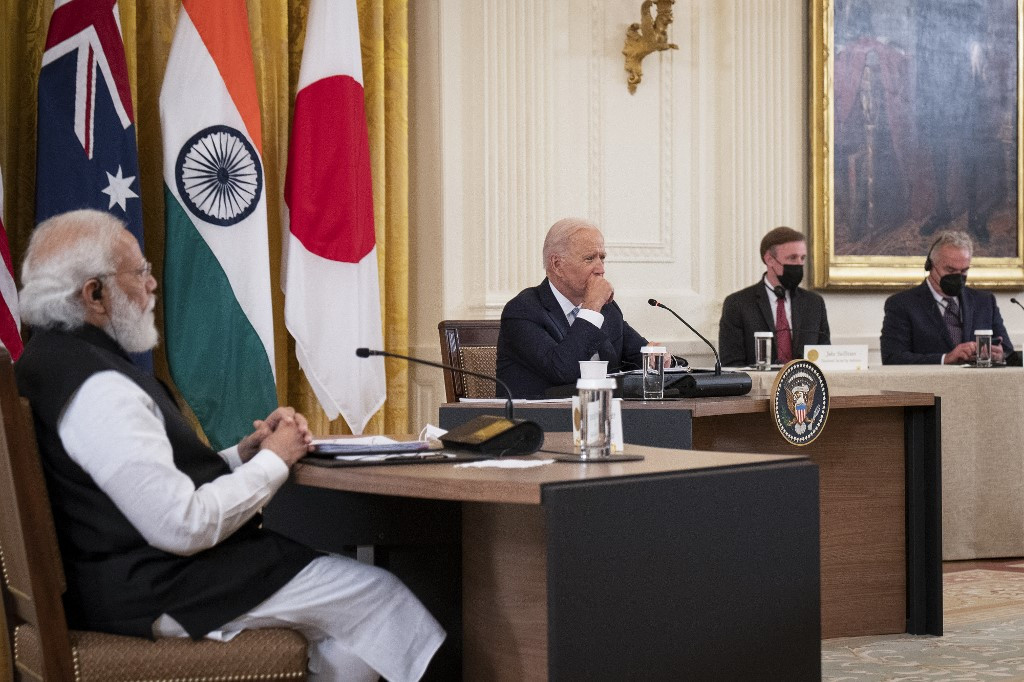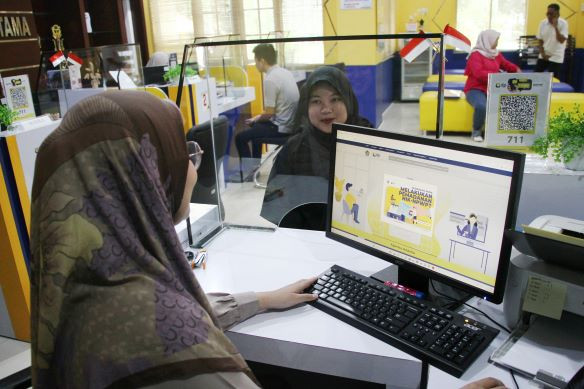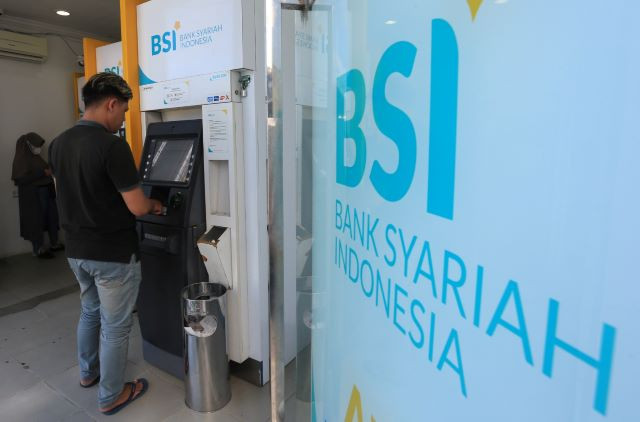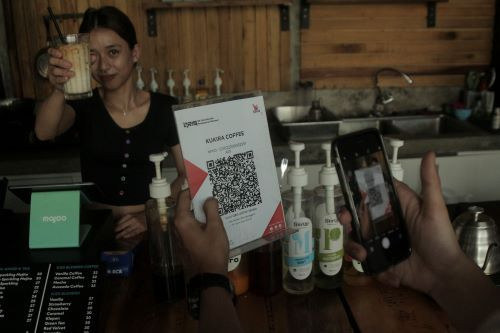The Quad adjusts to ASEAN
The Quad now manifest functional collaboration to contribute to the new order focused on the Indo-Pacific.
Change Size
 US President Joe Biden (center) and Indian Prime Minister Narendra Modi (left) listen during a Quad Leaders Summit with Australian Prime Minister Scott Morrison and Japanese Prime Minister Suga Yoshihide in the East Room of the White House on September 24, 2021 in Washington, DC. The four leaders are expected to discuss a range of topics including climate change, Covid-19 vaccines and a free and open Indo-Pacific ocean region. (AFP/Sarahbeth Maney)
US President Joe Biden (center) and Indian Prime Minister Narendra Modi (left) listen during a Quad Leaders Summit with Australian Prime Minister Scott Morrison and Japanese Prime Minister Suga Yoshihide in the East Room of the White House on September 24, 2021 in Washington, DC. The four leaders are expected to discuss a range of topics including climate change, Covid-19 vaccines and a free and open Indo-Pacific ocean region. (AFP/Sarahbeth Maney)
S
eptember 2021 was a month where ASEAN centrality was under challenge. The Quad, the most potent regional arrangement without ASEAN, held its second summit within a year on Sept. 24 of that year. Prior to that a security alliance involving Australia, the United Kingdom and the United States – AUKUS – emerged on Sept. 16.
This was a clear move against China and caused consternation among ASEAN countries which did not have a coordinated response. Some welcomed, some were ambivalent and others apprehensive that it will stoke a US-China contention further.
The AUKUS shows US intent to enhancing its strategic shift into the Indo-Pacific. It did not seek to convert the Quad but invigorate existing allies, UK and Australia. The post-Brexit UK is pivoting into the Indo-Pacific. With the new dialogue partnership obtained from ASEAN, an application for the Comprehensive and Progressive Agreement for Trans-Pacific Partnership (CPTPP) and now AUKUS, the UK is a visible player. Australia did not mind rupturing its submarine deal with France for this new alliance. The US extracts defense trade deals from its allies and friends.
There are several trilaterals in the region and many overlapping plurilateral groupings, mostly linked to the US as it seeks to deter China. The Japan-US-India, and the US-Japan-Australia infrastructure trilateral are among these.
The India-France-Australia trilateral was a recent one and is now frozen due to French annoyance with Australia. The India Japan-Australia Supply Chain Resilience Initiative is a more focused trilateral. All these are beyond ASEAN but efforts within the Indo-Pacific region.
The possibility of inviting the UK or France or others from outside the region into Quad seems remote. They may associate in common objectives but the Quad for now will remain informal and within countries of the Indo-Pacific. All Quad members are East Asia Summit (EAS) members and dialogue partners of ASEAN.
These countries, mainly the Quad, UK and France seek to challenge China’s hegemonistic tendencies in the region. This is different from the ASEANs strategic adjustment with China in a space critical to others too.
The Quad summit showed that all four members, India, Australia, Japan and the US, had become firmly committed to its objectives.
The summit announced a creative partnership in sectors of connectivity and infrastructure, emerging technologies, climate action, education, and above all COVID-19 responses – which include vaccines collaboration, and resilient and reliable supply chains. It aims to protect supply chains in semiconductors and other critical technologies. It is now a partnership for sharing of capabilities for common good
A major feature of the summit was its adjustment to ASEAN. At the March virtual Summit, there was strong support for ASEAN unity and centrality and for its Indo-Pacific policy. Now, the joint statement underscores “our dedication towards working with ASEAN and its member states—the heart of the Indo-Pacific region—in practical and inclusive ways”. Such adoration of ASEAN, and its centrality in the Indo-Pacific has not been heard from the Quad before. This softened the perceived blows to ASEAN centrality back in September 2021!
Statements by India and the US said the Quad is not a military alliance. With the two Quad summits the focus has shifted to a modern developmental partnership. The Malabar exercises and maritime security efforts between the Quad, are now differentiated from regular Quad activity.
This is to diminish ASEANs anxieties. The Quad is making itself more palatable to the ASEAN. It signals that associating with the inclusive Quad would not bring ASEAN in to defense relationships.
Adopting a developmental trajectory and keeping the security aspects separate, Quad reaffirmed support for the ASEAN Indo-Pacific Outlook. The Quad supports the EU Indo-Pacific policy too. It is akin to the ASEAN policy. It does not treat China as a rival or adversary.
Besides these calming approaches, the Quad announced a policy of collaboration. Three sectors were enunciated since March: climate, COVID-19, and critical technologies. Now space, cyber security, and resilient supply chains, are added to build a partnership of high standards.
Infrastructure, semiconductors, 5G, vaccines, and new technologies, will all enhance post-pandemic prosperity of the Indo-Pacific. The Quad initiatives believe that as ASEAN is at “the heart of the Indo-Pacific”, the common good that will emerge will include ASEAN as a partner.
ASEAN would not be invited to join the Quad. The benefits accruing from collaboration will be offered to them. Among the early harvest should be the vaccine production, which is established in India under through Quad partnership. About 1.2 billion doses are expected to be shared with the Indo-Pacific in 2022.
Japan offered loans of US$3.3 billion to support vaccine development. Australia offers $219 million for vaccine distribution in the region. Australia would also provide a similar grant to purchase vaccines for Southeast Asia and the Pacific. India will finance 500 million doses. These would directly benefit ASEAN countries.
The Quad offers coordinated plans with the ASEAN Secretariat and the COVAX facility for vaccine distribution. This is the first time that the Quad suggests to work directly with the ASEAN Secretariat.
A Quad Infrastructure Coordination Group is announced. Since 2015, Quad countries have provided $50 billion for infrastructure in the region. The Quad infrastructure group proposes to invite private sector investment into the region. They can coordinate with the Master Plan on ASEAN Connectivity 2025.
The Quad initiatives will offer an alternative for partners who may want to balance their dependence on China. The Quad option could lead to collaboration with leading entrepreneurs and business houses. Just as Quad approach is altering, there are changes brewing in China too which ASEAN will be aware of.
The next 25 years will have a new paradigm of international engagement. The Quad now manifest functional collaboration to contribute to the new order focused on the Indo-Pacific. With ASEAN clearly at its core it will support ASEAN regional leadership and initiatives as in Myanmar.
The Quad decided to have an annual summit, and an annual foreign ministers meeting. These are likely to be held on the sidelines of major events like the United Nations General Assembly, as this time. They could very well happen around the EAS. All four countries are members of the EAS and have dialogue partnerships with ASEAN.
Quad does not seek to draw ASEAN into any contention with China. It offers opportunities for diversifying sources for their future development. This will contribute to the strategic autonomy of ASEAN and its members. The Quad will seek a ring of prosperity and contemporary partnership in the Indo-Pacific and share this with ASEAN. It is up to ASEAN countries to choose to engage individually, collectively or not all.
The Quad is reaching out in benign ways.
***
The writer is a former Indian ambassador to Indonesia and ASEAN.










